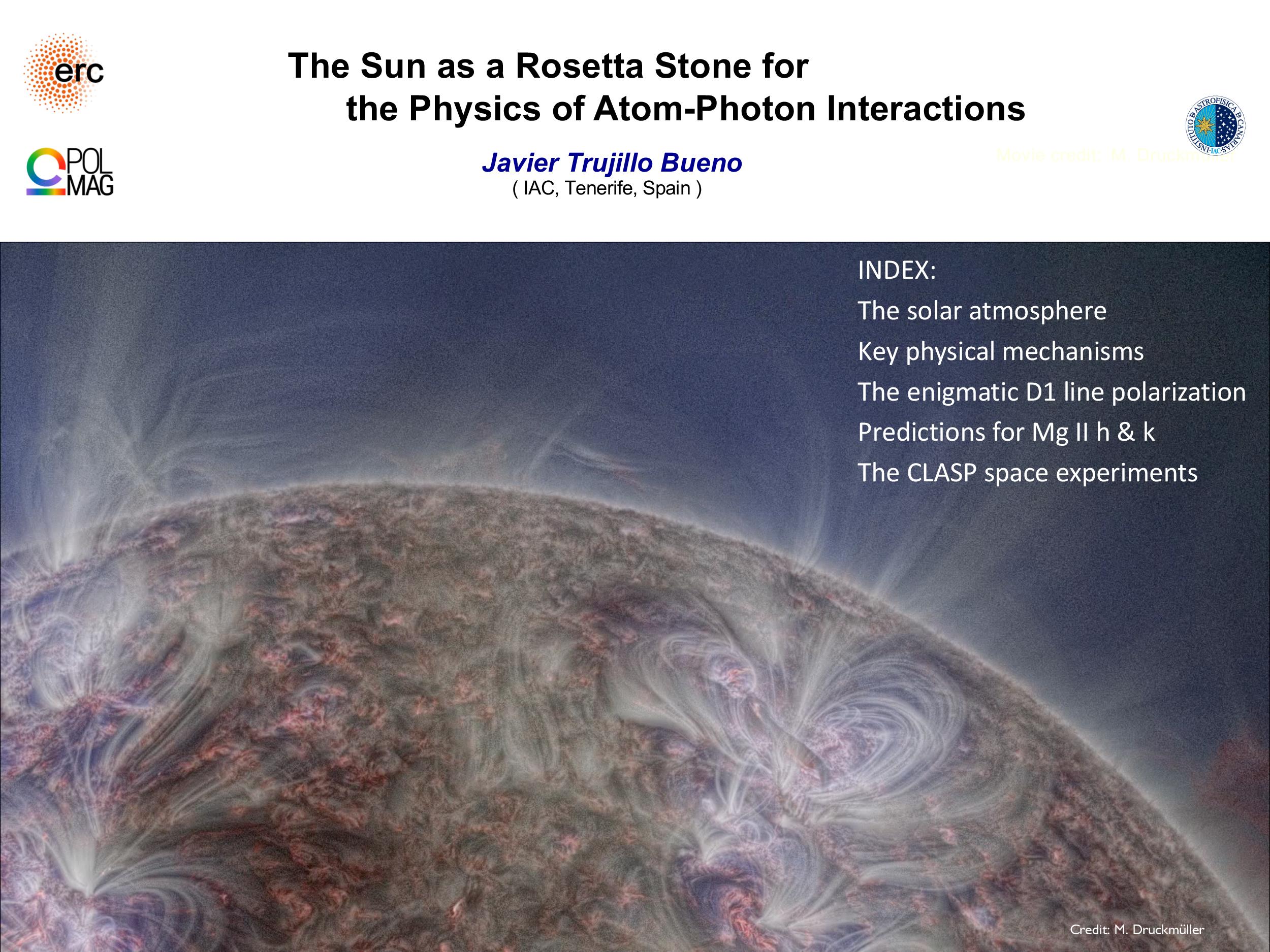Affiliation
Instituto de Astrofísica de Canarias
Main category
Natural Sciences (Astrophysics and Astrononmy)
Abstract
The magnetic field is the main driver of the spectacular activity of the upper solar atmosphere, including the eruptive phenomena that determine the near-Earth space weather. For this reason, one of the great challenges of astrophysics is the empirical investigation of the magnetic fields that permeate the solar atmosphere. Recent advances in our theoretical understanding of the fingerprints that photospheric, chromospheric and coronal magnetic fields leave in the solar spectrum, as well as in the development of the instrumentation needed to measure the key observables, are activating a new revolution in solar physics. Here I provide a personal view of some recent advances, such as predictions on the polarization in some spectral lines (to be confirmed by DKIST and/or EST), the solution of a long-standing paradox in solar physics, and the inference of chromospheric magnetic fields from the unprecedented ultraviolet spectropolarimetric observations enabled by the CLASP suborbital space experiments. All these novel investigations show clearly that the solar atmosphere represents a unique laboratory for improving our understanding of the physics of atom-photon interactions in astrophysical plasmas.
Further reading
http://research.iac.es/proyecto/polmag/pages/publications.php
Do you have problems viewing the pdf-file? Download presentation
here
If the presentation contains inappropriate content, please
report the presentation. You will be redirected to the landing page.
